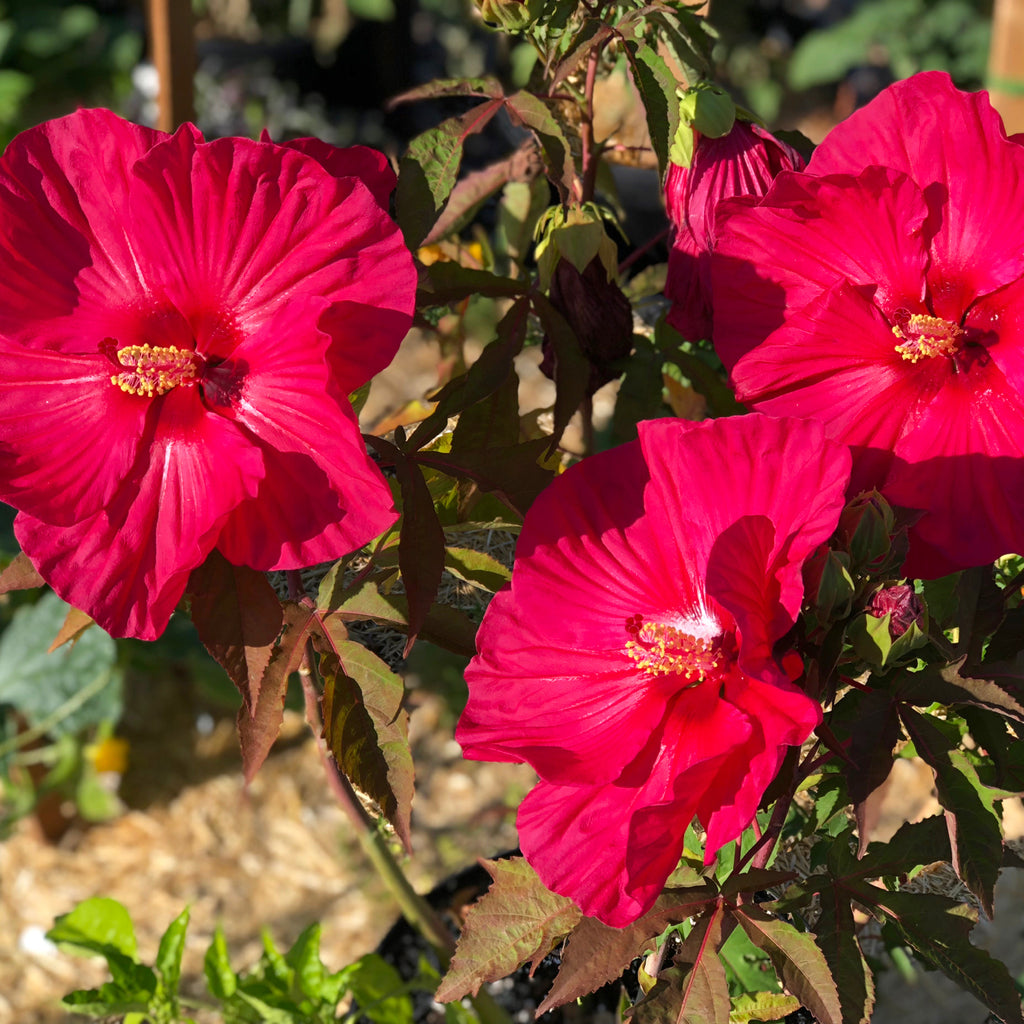
Maintaining your plants during hot weather


The hot summer temperatures have actually been an important theme this gardening season, and we get a lot of questions that relate back to heat. So, we thought it would be a good time to review a couple of common scenarios:
First up, gardeners heading out of town for a few days often wonder how best to keep thirsty plants happy and healthy during intense weather. For in-ground gardens, some easy suggestions include watering deeply before heading out (soaker hose ideal for this), using wheat straw mulch to keep moisture in the ground (mulching reduces need to water by at least 50%) and doing appropriate pruning on leafy plants such as tomatoes (start with leaves at the bottom, and look for the foliage that does not end in flowers). Slow-release watering devices such as olas or gravity fed options such as Plant Nannies work wonders, as do simple temporary shade structures. In fact, providing a little shade is very appropriate for full sun plants during intensely hot weather.
When it comes to containers there is much greater chance of plants being damaged by heat / drought, even in short time frames. With this in mind, many of the same principles apply as would in ground. For example, you can mulch the soil in containers for a significant reduction in water loss, and gravity fed watering devices work wonders. If you are only going to be away for a couple of days, using a deep saucer and generously watering from the bottom can stabilize soil moisture. And containers are handy because they can be tucked into a shadier location for a short time if necessary. The most vulnerable type of containers are hanging baskets, since they are usually very exposed, so consider taking these down from their hanging location while you are away.
We've also noticed a higher than average number of people who had trouble getting garden-sown seeds to germinate this season. And we are talking normal things like beans, lettuce, radishes etc. This is attributable to the hot weather, dry soil and lack of rain (followed by very heavy rains every so often). Seeds either found it too hot, too dry or were washed away by the occasional but very heavy rains. So, is it too late to resow? Actually many types of veggies can be sown at multiple points through the spring / summer. Some of the best candidates for summer crops include beans, carrots, kale, heat tolerant lettuces, basil, dill, cilantro, mustards, chard and beets.
There are a few other heat related things to watch for: some plant diseases - particularly fungal diseases - develop most easily during heat, so keep an eye out for the earliest signs of these. Fungal problems are usually easy to spot visually, with moulds or spots developing on leaves and or stems. Fungal problems are much easier to deal with in their early stages; for rust, black spot, powdery mildew the sulfur-based Safer's 3-in-1 is a great early intervention; for tomato blight you want to turn to the copper and lime based Bordo Mix.
Insects also tend to reproduce more quickly under warm conditions, so keep your eyes open for little population explosions. Some, like aphids, are best left to the beneficials rather than sprayed (although fast flowing fresh water is a good intervention for aphids), while more damaging problems such as cabbage moth caterpillars can easily be controlled with safe products such as BTK. For more unusual pest problems the U of M offers a "bug line" diagnostic service... this free service is staffed by entomology graduate students and can provide lots of insight into what's bugging you!
Last thought on hot weather... don't over look the importance of watering. When planting new stuff be sure to fill the planting hole with water, and remember to water recently planted trees and shrubs (even those planted over the last few years) on a weekly basis. Finally, best practice is to soak close to the root zone and definitely avoid watering the foliage on all of your outdoor plants.






